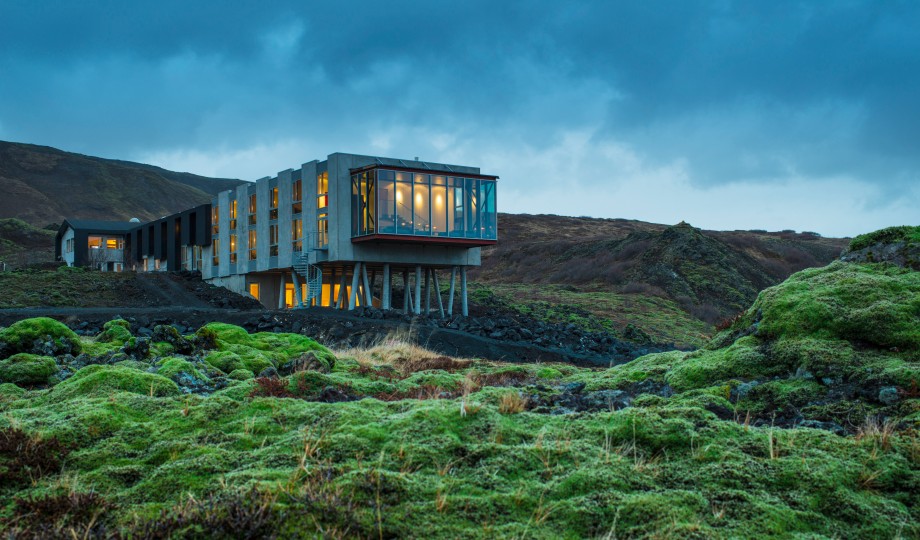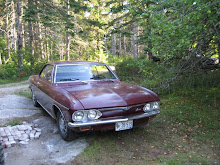The room at the Hotel Ion seemed so perfectly Scandinavian: compact, stark, laden with hidden amenities. The WiFi worked, each room came with an iPad filled with Land Rover information, coffee and hot chocolate were available in your room, truffles showed up in the afternoon. The view was that of a parking lot and mounds of frozen lava.
. 
I fiddled around the room, showered, and took a short nap. Around 11:00 I took a light breakfast prior to an orientation meeting.
First off, we received our Icelandic-designed, Land Rover logo coats from 66North.com, a Land Rover hat and a pair of North Face gloves. This was just some of swag: we also received a Land Rover cell phone battery pack, a duffell bag and a Petzl headlamp. Given the limited amount of daylight, it made some sense.
The plan that day called for us to go four-up in a Discovery so as to experience on road and off road driving. While many of the journalists present had traveled to events like this together and knew each other, I just jumped in wherever I saw an empty seat. I wound up with a writer from Autoblog.com, one from Indianapolis freelancing for a lifestyle magazine, and one from WardsAutormotive.com.
We began our drive to Pingvellir National Park in ice-covered roads, the majestic landscape of rural Iceland surrounding us.
The park offered hot springs and geysers, as well as a coffee stop. The big geyser and the "little" geyser did just what they were supposed to do and we left refreshed, if surprised by the dusk at only 3:30 pm.
Our guides were team members from the Land Rover Experience in the UK, including Will Cox and Joel Rang from Land Rover Experience Scotland.
The return drive took us by another route of narrow gravel lanes, and then onto a plowed track between hillocks around the geothermal plant near the Hotel Ion.
The Discovery Sport came only with a rotary dial for selecting gears and buttons to choose the best mode for conditions; in our case, "snow, grass, gravel." If you wanted to select a higher of lower gear within the 9-speed transmission, you had to use either the paddle on the steering wheel, or engage the hill descent system [pioneered by Land Rover], the speed of which could be controlled by using the + or - control on the cruise control system. I tested it out so thoroughly that one of journalists asked, "Is that you or the car? What's wrong with the car?" I don;t think he really believed me when I said I was testing out the engine braking (perhaps he wasn't an off roader?), but it really did work well.
To the dismay of most of the journalists the Discovery Sports came shod with Pirelli studded winter tires; somehow that was seen as Bill Bellichick-like bending of the rules. I questioned whether any of them had really done much off roading - without proper tires no vehicle would go anywhere. And given the added noise of studded tires it provided an added challenge to the noise and vibration categories that seemed to galvanize their collective attention.
When we returned to the Hotel Ion, Land Rover made a formal presentation, led by Paul Cleaver, the Development Engineer for the Discovery Sport, and Stuart Schorr, LRNA's Communications Director [below].































.jpg)
.jpg)
.jpg)
.jpg)




.jpg)


.jpg)
.jpg)
.jpg)
.jpg)



.jpg)




